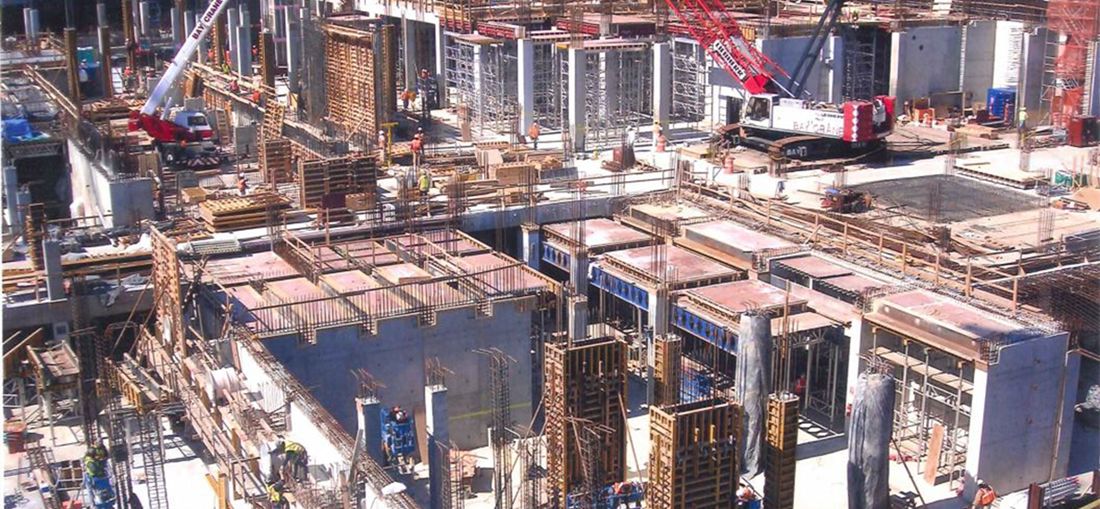Croton Water Treatment Plant
Tully Construction Co., Inc. has completed the largest single construction contract ($1.3bn) in New York’s history, JV with Skanska Northeast. When the Croton water filtration plant entered service it brought an end to a long, and at times controversial, saga which began back in 1989. The plant represents a significant step in improving the water quality of the one million New Yorkers who rely on the Croton water system – the city’s oldest – which first began service in 1842. Being built entirely underground and requiring deep excavation and extensive rock boring to provide the necessary water tunnels, the fourstorey plant will ultimately treat around 1.2 million cubic metres a day. This represents roughly 10% of New York’s daily requirement – though the plant will be able to increase its throughput to supply around 30% in times of drought or severe need. The construction contract amount was for $1.3bn. By July 2009, excavation of the two treated water tunnels, concrete arrangement for lining the raw water tunnel and installation of mechanical piping and electrical work at the site were completed. Off-site work at the treated water shafts at one of the reservoirs of the Croton system, Jerome Park Reservoir, was also undertaken. Construction of the two treated water tunnels, with a combined length of 2.42km, and the 268m raw water tunnel was completed in February 2011. A tunnel boring machine was used to excavate the twin treated water tunnels, while the raw water tunnel was drilled through 268m of rock.
The water filtration plant
The processes to be used are largely conventional and well established, with water arriving at the plant undergoing the usual regime of pretreatment stages – mixing / coagulation, flocculation and chemical balancing. Flocculation will be a two-stage process, with a minimum 144- second period for each stage. Treatment itself will involve stacked dissolved air floatation (DAF) / filtration – the combination of a DAF loading rate of 50gpm and a dual media filter containing 60cm anthracite, 30cm sand being chosen to optimise particulate removal. DAF sludge skimmed solids will be dewatered by centrifuge before disposal. The filtered water is then disinfected by treatment with UV and chlorine. After treatment, the water will be chemically adjusted as required and subsequently dosed with orthophosphate for corrosion control and hydrofluorosilicic acid to add fluoride. The main construction houses the treatment plant itself, administration offices and an on-site laboratory, and additionally includes chemical storage and facilities for process residuals and backwash water, together with the necessary ancillary electricals, SCADA and piping. Associated work will provide a raw water tunnel from the New Croton Aqueduct, with a pumping station and wet well, corresponding pumping arrangements for treated water and a second tunnel linking to the city’s distribution network.
The whole system will call for the provision of ovation controllers, 12 workstations, four operator interfaces and a variety of ‘smart’ devices, including magnetic flow-meters, pressure and temperature sensor / transmitters and automatic chlorination analysers. To ensure the full integration of the whole facility, the contract also extends to providing the hardware, network design and maintenance of the administration buildings. The new plant is to be the first WTP actually located within New York’s boroughs, being constructed at a 12-acre site within Van Cortlandt Park beneath the Mosholu Golf Course in the Bronx – with ten acres being turned back into a municipal golf course on completion. This inevitably poses some serious construction challenges, including the need to drill, blast and excavate more than 730,000m³ of rock and soil. The final excavation will be 150m × 180m in footprint and lie 30m down in the underlying rock. The two treated water tunnels and a raw tunnel have been constructed to transport water into and out of the filtration system. Originally intended to filter and disinfect 1.1 million cubic metres daily, the additional 100,000m³ a day appeared as part of the latest contract.




